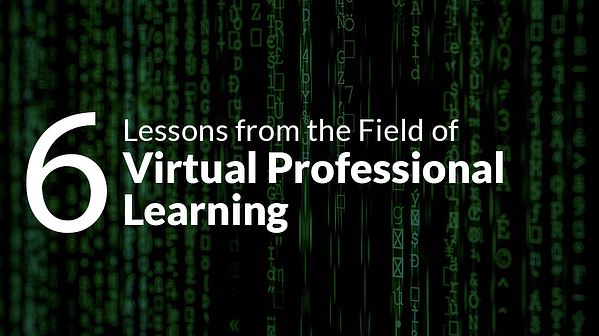When the world changed in March, educators were quickly thrown into the realm of virtual instruction. For those of us who provide professional learning, we were tasked with how to support teachers from a distance during these unprecedented, changing times. We pondered the best way to reach teachers, many of whom were suddenly required to juggle online instruction for their students while also being at-home instructors for their own children. How long did these sessions need to be? What time of day was best? How would we deliver instruction? How would we engage teachers and make this learning meaningful and relevant?
I serve as a school improvement specialist at the Middle Georgia Regional Educational Service Agency. This spring, I worked with another specialist to plan and provide virtual instruction in literacy for teachers and instructional leaders in grades 6-12. What follows are lessons learned from our trial and terror experience.
1. Practice, practice, practice.
For our first venture into virtual learning, we spent days planning and brainstorming. After we decided on a video platform, we practiced multiple times with volunteer participants to make sure we could anticipate what would happen during a live session. Without those practice sessions, some of our “goofs” could have happened with real participants. For example, we practiced how to share our screen, how to make the audio work for videos, how to move into breakouts, etc. We discovered that we needed to change the settings for allowing people in the room, muting all microphones, etc.

2. Interaction is key.
Participants need opportunities to interact with each other and the presenters frequently. I read that the new industry standard for participant interaction in virtual professional learning is every three to five minutes. We found that using a variety of strategies helped. First, we asked participants to respond in the chat box. Later, we expanded to having them answering live polls, and even using their phones to interact with material on the screen. We modeled social-emotional learning breaks for teachers. For example, we stopped and asked participants to use their phone to manipulate tools on the screen to indicate their feeling or their level of understanding at a particular moment. We usually had about 30 people in our sessions, so this seemed manageable.
3. Two talking heads are better than one.
We realized an increased level of engagement with a conversation model between two or more presenters. Instead of a one-at-a-time talking head, we tried to model a realistic discussion about the content. This back and forth conversation increased engagement. We were used to having two presenters in face-to-face workshops, and so it seemed natural to continue in this format when we transitioned to virtual learning.
4. Research and explore…take a risk.
There are free add-ons and extensions that can help make PL more interactive. We explored, researched, and tried different tools until we found ones we liked. Our team used polling features and an add-on that made our slides interactive. By modeling instructional technology for teachers, they were able to experience its benefits without having to do the legwork. It’s important we do everything in our power to make our teachers’ jobs easier.

5. Keep your sessions brief and relevant.
We found that one- to two- hour sessions are best. Anything longer than that and we found participants are not as engaged: No one wants to listen to presenters for one to two hours while they are juggling so many responsibilities at home. We had to engage adult learners in ways that we had never considered before. When you have a face-to-face audience, they are usually more captive than they are online. There are more opportunities for distractions when participants login from home: the laundry that needs to be changed out, the dishwasher signaled that it’s ready to be emptied, etc. We had to “up our game” and provide lots of activities that would require engagement. We decided that mid-afternoon sessions were most effective. We realized that educators were using the morning hours to complete required work assignments, help their students, and even help their own children. Mid-afternoon seemed to have fewer competing activities.
6. Use video and small group breakouts whenever you can.
We found that having the cameras turned on for the presenters in the main room made the sessions more personal. Due to bandwidth issues, we sometimes had to turn off participant cameras in the main room, but we always allowed them in small group breakout sessions. Feedback from our training sessions indicated that participants liked the breakout sessions where they could “see” and talk to a small group about the content and their learning experiences. The need for human connection during this period of social distancing was evident.
As educators in this new frontier, we can’t be afraid to try new instructional technology tools. The available technology is changing continually and we have to be willing to take advantage of the wealth of free tools and resources that vendors are offering during this time. Educators are hungry for professional learning and for the opportunity to pick and choose the topics that meet their needs during this time. And we can’t underestimate the need for human interaction and socialization. Most educators are social creatures by nature. They want to relate to others and work together. We must be ready to meet this need while helping educators grow in their profession. We are all in the same storm, but we are not in the same boat. It is our job to find new ways to support educators as they work with our greatest commodity…our future.






